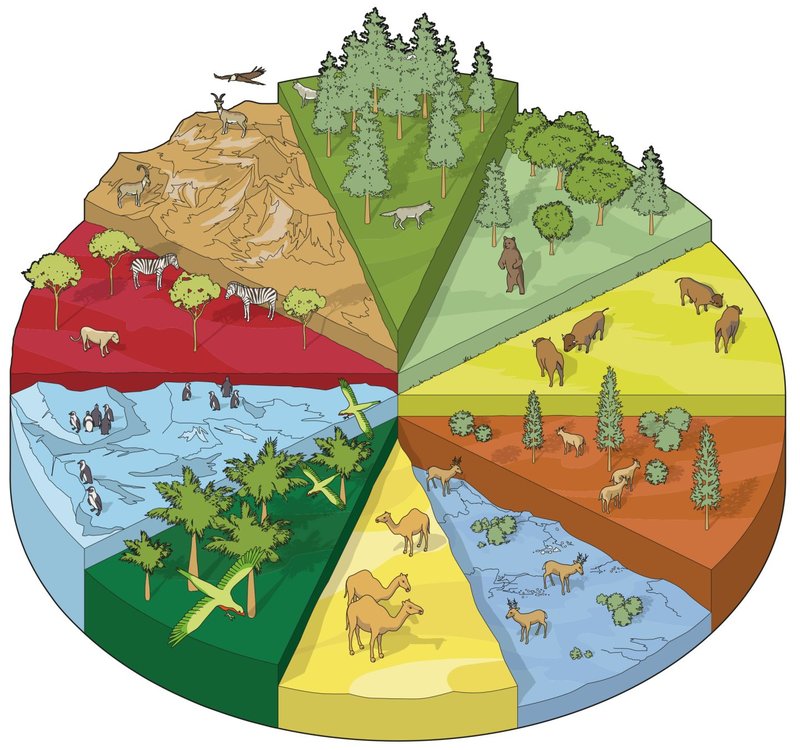
Picture this: a stunning landscape filled with towering mountains, steep cliffs, and lush forests. That’s the world of takins—one that’s pretty remote and beautiful. These creatures thrive in places where other animals might struggle. It’s a bit like how some people prefer cozy cottages in the woods, while others love the bright lights of a city. Takins have chosen their cozy “cottage” high up in the mountains. In this article, we’ll dive into their habitat, where you can find them, and why these environments matter for their survival.
Takins’ Natural Habitat
Takins are primarily found in the mountainous regions of Central and East Asia. Their favorite hangout spots include the Himalayan foothills, parts of the Tibetan plateau, and the dense forests of China, Bhutan, and India. Think of high altitudes, steep slopes, and chilly weather, and you’ve got a pretty good idea of what makes up their habitat.
These animals prefer high-altitude grasslands and forests where they can find abundant food like grass, shrubs, and leaves. The thick vegetation provides them with shelter from harsh weather conditions and predators. Here’s the thing—takins are surprisingly adaptable. They can live in both temperate and subtropical environments as long as there’s enough food and cover to keep them safe.
In the wild, you’ll often find them roaming in small herds. These social groups not only provide safety in numbers but also help them find food more easily. The combination of their rugged environments and social behavior makes their habitat truly special.
Geographical Distribution of Takins
Takins are mainly found in a few countries across Asia. In China, they inhabit the mountainous regions of Sichuan, Yunnan, and Tibet. Bhutan and India are also home to these remarkable creatures, primarily in the northern and eastern parts. Depending on the season, you might find them migrating to lower altitudes in the winter for food and warmth.
The most well-known species is the Sichuan takin (Budorcas tibetana), which is native to the mountainous areas of China. Another species is the Mishmi takin (Budorcas taxicolor), found in the eastern Himalayas. Their habitats are unique not only because they are isolated but also because they have adapted to the specific climate and geography of these regions.
Interestingly, while takins have a fairly restricted range, conservation efforts are in place to protect their habitats. As urban development expands and human activity increases, preserving these unique environments is vital for their survival.
Environmental Factors Affecting Takins
Takins thrive in environments that are defined by rugged terrain and cold climates. The elevation helps keep them safe from many predators, and thick vegetation provides cover. These animals are actually quite sensitive to environmental changes. For instance, if their habitat starts to degrade due to human interference or climate change, it can significantly impact their survival.
You might be surprised to learn that takins are excellent climbers. They roam steep, rocky terrains where few other animals can venture. This ability not only helps them avoid predators but also allows them to reach food sources that are high up on cliffs and in trees. Such specialized adaptations show just how well these creatures fit into their specific habitats.
The weather plays a big role in their daily life, too. Takins are well adapted to cold, snowy conditions. Their thick fur keeps them warm in the harshest of winters, while their hooves help them navigate icy surfaces. So, when you think of takins, imagine strong, resilient animals perfectly designed for life on the mountains.
Human Interaction and Habitat Preservation
As picturesque as their habitats are, takins face threats from human activities. Logging, agriculture, and mining can lead to habitat loss and fragmentation. When these areas are destroyed, takins struggle to find food and shelter. That’s why conservation efforts are crucial.
Many organizations work to protect the natural environments where takins live. Establishing national parks and wildlife reserves helps create safe havens for them. These protected areas not only preserve the unique ecosystem but also maintain the balance of nature, allowing the entire environment to thrive.
You might wonder how you can help. Supporting conservation groups or spreading awareness about these amazing animals can make a big difference. Every bit counts when it comes to protecting habitats and ensuring that takins can continue living in the beautiful mountains they call home.
In the grand scheme of things, understanding where takins live and their habitat’s significance is vital for their survival. These remarkable creatures have adapted beautifully to their mountainous homes, showcasing the wonders of nature and evolution. The next time you hear about takins, think of them not just as unique animals but as symbols of the wild, rugged landscapes that need our protection.
We all share this planet, and what happens to one species or habitat can affect many others. So let’s appreciate the takins and work together to maintain the pristine environments they inhabit. After all, every creature plays a part in the rich tapestry of life on Earth!

